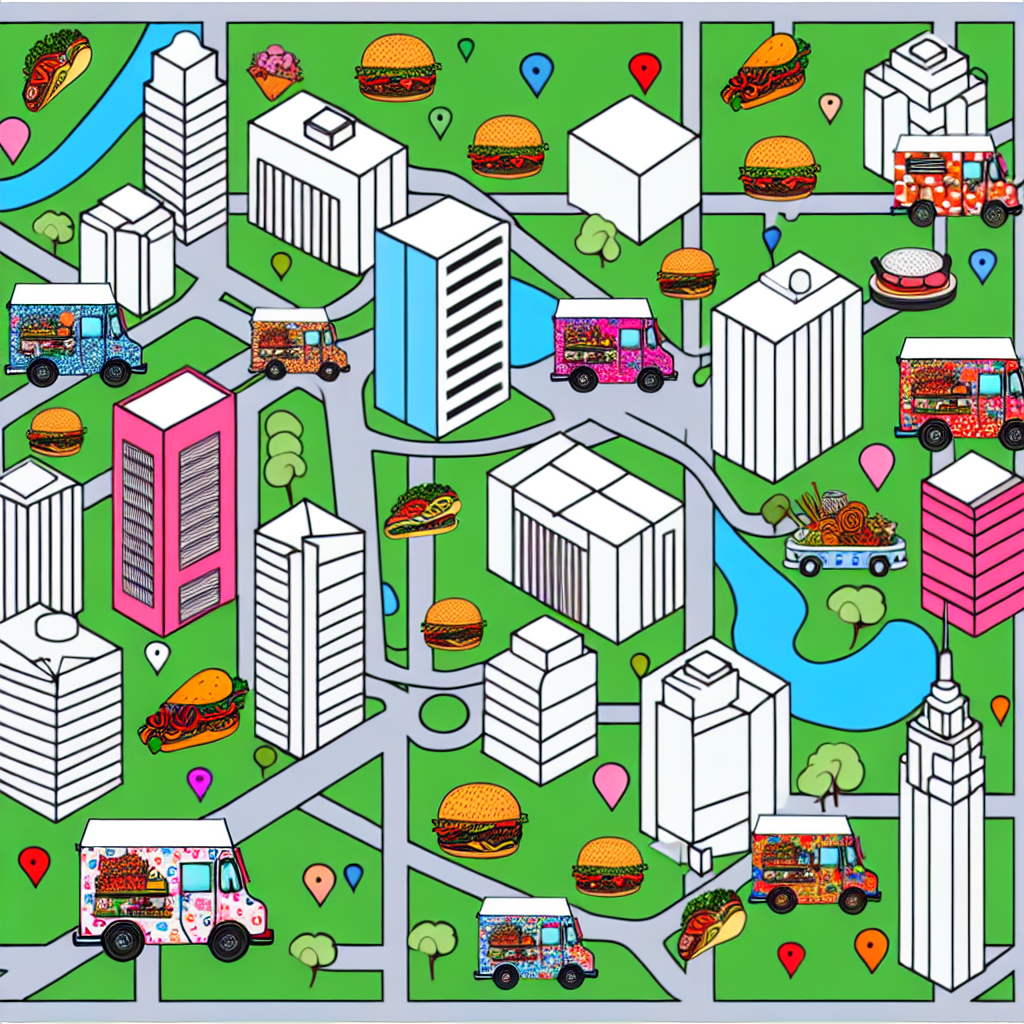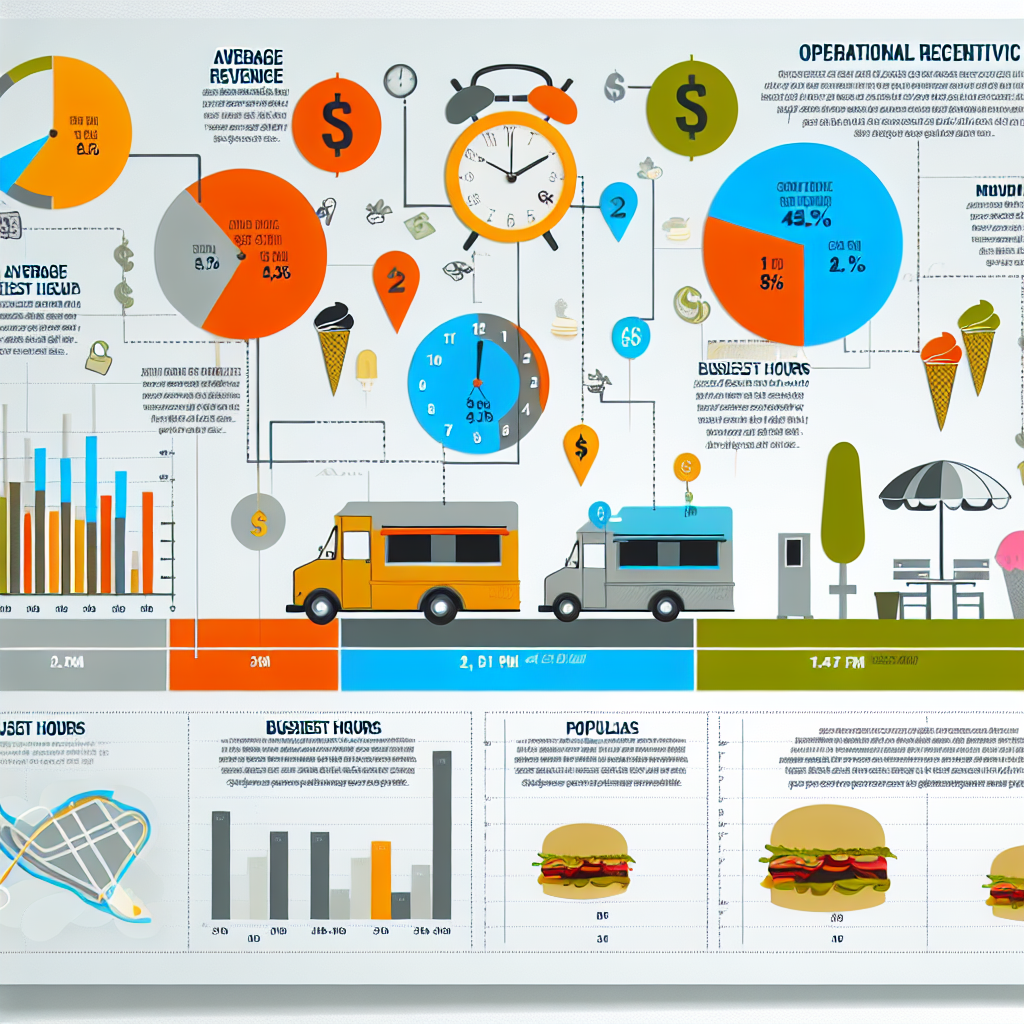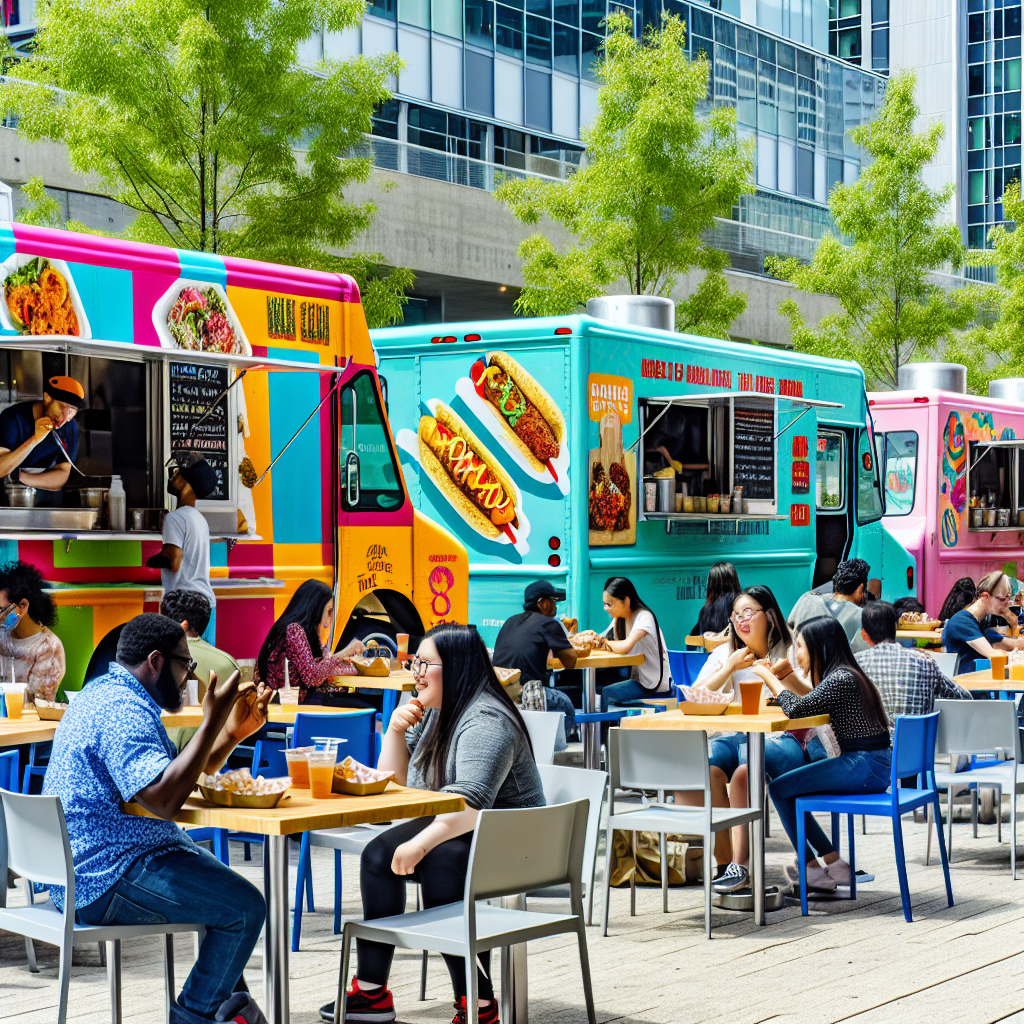The vibrant food truck scene has risen dramatically in recent years, cementing its role as a staple in modern urban dining. A significant forecast indicates the food truck industry could surpass $1 billion by 2027, signifying its appeal to both food lovers and aspiring entrepreneurs.
Navigating this edible landscape presents enthusiasts and vendors alike with several challenges. Key among these are the operational hours and parking regulations that dictate where and when these mobile eateries can offer their culinary delights. Understanding these aspects is crucial for enhancing the dining experience for customers and optimizing operations for business owners.
With heightened enforcement initiatives like Operation Safe Driver Week—responsible for over 1,800 citations focused on commercial vehicle adherence—grasping local laws has become increasingly essential. By getting familiar with operational parameters and parking rules, both patrons and vendors can sidestep obstacles and guarantee that appetizing dishes are always nearby, ready to be savored.
Typical Operational Hours for Food Trucks
Operating hours for food trucks vary widely based on location, local food truck laws, food truck business regulations, and the demographics of the areas they serve. For most food trucks, typical operational hours usually revolve around the following schedules:
- Lunch Service: Many trucks cater to the lunchtime crowd, operating from around 11:00 AM to 2:00 PM. This timeframe is particularly popular in urban business districts where office workers seek quick meal options during their breaks.
- Dinner Service: For evening diners, food trucks often open from 5:00 PM to 8:00 PM, appealing to customers looking for casual dinner alternatives after work.
- Late-Night Service: In urban areas or near nightlife hubs, some food trucks extend their hours, serving late-night crowds until midnight or even later. This trend has grown, particularly in cities with vibrant nightlife, where food options can be limited after hours.
Regional Variations
Different regions in the U.S. experience variations in food truck operational hours largely dictated by local food truck laws and regulations:
- Minnesota: Cities such as Minneapolis and St. Paul typically see food trucks operating during lunch and dinner hours, but many extend to midnight near college campuses to cater to late-night students.
- Wisconsin: In Wisconsin, food trucks also operate lunch hours from 11:00 AM to 2:00 PM and dinner from 5:00 PM to 8:00 PM. In busy urban locations, especially those with nightlife, some trucks can stay open into the early morning hours.
Impact of Recent Traffic Enforcement Measures
Recent traffic enforcement initiatives, particularly those focusing on commercial vehicles, have imposed regulations that can affect food truck operations:
- Denver, Colorado: The city reinstated a ban on food trucks in critical urban areas during weekend nights, specifically from 10:00 PM to 3:00 AM. This decision has faced significant pushback from local food vendors and advocates who argue it limits their business opportunities.
- Cincinnati, Ohio: New regulations effective September 2025 will require food trucks in select districts to close by 11:00 PM on weekends, as a response to public safety concerns. This has raised alarm among food truck owners who depend on late-night service for profit.
- Philadelphia, Pennsylvania: In Philadelphia, an expanded business curfew now forces food trucks to close from 11:00 PM to 6:00 AM. Food truck operators have voiced frustrations over perceived retaliation against those who opposed these new rules.
The dynamic nature of food truck operational hours requires owners to stay informed about local food truck laws and business regulations, adjusting hours accordingly to meet community needs while complying with new enforcement measures. As the industry evolves, awareness of these patterns can significantly influence success in this competitive market.

Parking Regulations for Food Trucks
Food truck parking regulations in urban areas are designed to balance the interests of mobile vendors, brick-and-mortar establishments, and the general public. These regulations often include specific enforcement measures and fines to ensure compliance. While initiatives like Operation Safe Driver Week primarily focus on road safety and driver behavior, they can indirectly affect food truck operations through heightened enforcement activities.
Enforcement Measures and Fines in Major Cities:
- San Antonio, Texas: The city enforces a “300-foot rule,” prohibiting food trucks from operating within 300 feet of any brick-and-mortar food establishment. Violations can result in fines up to $2,000 per day. This regulation applies even if the food truck is parked on private property. Source
- Chicago, Illinois: Food trucks are banned from operating within 200 feet of a restaurant. To enforce this, the city mandates that food trucks install GPS tracking devices, allowing authorities to monitor their locations. Violations of the 200-foot rule can lead to fines ranging from $1,000 to $2,000. Source
- Washington, D.C.: The Department of Public Works has intensified enforcement of parking regulations for food trucks, particularly focusing on the two-hour parking limit at metered spaces. This crackdown has led to numerous fines, with some vendors reporting multiple tickets per week. Source
Interaction with Operation Safe Driver Week:
Operation Safe Driver Week, organized by the Commercial Vehicle Safety Alliance (CVSA), is an annual initiative aimed at improving driving behaviors through increased enforcement and education. During this period, law enforcement personnel monitor for unsafe driving behaviors, including speeding, distracted driving, and reckless driving. While the primary focus is on road safety, the heightened enforcement activities can indirectly impact food truck operators, especially concerning parking violations and adherence to local traffic laws. Source
Conclusion:
Urban food truck operators must navigate a complex landscape of parking regulations, which often include strict proximity rules and substantial fines for non-compliance. Additionally, initiatives like Operation Safe Driver Week can lead to increased enforcement of traffic and parking regulations, further affecting food truck operations. Staying informed about local laws and enforcement initiatives is crucial for food truck vendors to operate successfully and legally.
| Location Type | Typical Fees | Restrictions | Average Food Truck Capacity |
|---|---|---|---|
| Urban | $100 – $400/day | Often must be 200-300 feet away from restaurants; permits needed | 1-2 serving stations |
| Rural | $50 – $200/day | Fewer restrictions; often easier access | 2-4 serving stations |
Recent Traffic Enforcement Data for Food Trucks
During the recent Operation Safe Driver Week held from July 13 to 19, a comprehensive traffic enforcement initiative evaluated the driving behaviors of both commercial motor vehicle (CMV) and passenger vehicle drivers. While specific data regarding food trucks is not individually reported, they are subject to the same regulations as other CMVs.
In total, law enforcement agencies issued 2,504 citations to drivers, including 1,073 warnings for speeding among CMV drivers, which is a significant concern for food trucks that often operate within tight schedules. Additionally, CMV drivers faced 204 warnings and 248 citations for seat belt violations, reflecting the critical need for compliance with safety regulations.
Distracted driving, a serious issue for all drivers, resulted in 107 warnings and 79 citations for CMVs. Furthermore, the focus on reckless driving led to 12 citations and 47 warnings issued, indicating a pressing need for food truck operators to prioritize safe driving practices.
Given this extensive enforcement, food truck operators are encouraged to maintain strict adherence to traffic laws, particularly regarding speed limits, seat belt use, and avoiding distractions while driving. This vigilance not only promotes safety but also minimizes the risk of penalties during enforcement weeks like Operation Safe Driver Week, where awareness and compliance can significantly affect operational success.
Implications of Traffic Enforcement for Food Trucks
Traffic enforcement and related regulations significantly influence food truck operations, affecting their operational hours, safety, and overall business viability.
Operational Hours and Regulations
Food trucks often find themselves restricted by a myriad of local regulations that dictate when and where they can operate. A study reviewing municipal codes in California found that a considerable 85% of cities and 75% of counties impose time limits on food truck operations, which often extend beyond health regulations, encompassing labor laws and more. For instance, in July 2025, Cincinnati adopted a new ordinance requiring food trucks to cease operations by 10 p.m. on weekdays and midnight on weekends, impacting the peak hours where they traditionally generate the most revenue. These limitations, while designed to enhance public safety, elicit concerns over potential reductions in business, as many customers prefer late-night food options.
Safety Considerations
Safety is another paramount concern for food trucks, especially given the heightened scrutiny from traffic enforcement initiatives. The Federal Motor Carrier Safety Administration reports that more than 4,000 fatalities occur annually in crashes involving large commercial vehicles, with large trucks, including food trucks, facing a higher risk of severe accidents. Moreover, food truck operators face unique safety challenges, including vehicle accidents and work-related injuries such as slips and burns. Because of these risks, food truck owners must adhere strictly to traffic laws and prioritize safety protocols, particularly amidst increased enforcement periods like Operation Safe Driver Week, which emphasizes safe driving behaviors and compliance with traffic regulations.
Business Implications
The economic impact of traffic enforcement measures cannot be understated. In cities like Oakland, vendors previously required to change locations every two hours faced significant challenges in maximizing sales. However, adjustments in regulations allowed for more lenient timeframes, improving vendors’ profitability. Studies reflect that food trucks do not adversely affect the restaurant industry but instead coexist with brick-and-mortar establishments, highlighting their ability to adapt and thrive within regulatory frameworks. The Institute for Justice found no statistical correlation between food trucks and restaurant closures, reinforcing the notion that food trucks can complement traditional dining options rather than substitute them.
In conclusion, while traffic enforcement measures aim to optimize safety and maintain order on the streets, they also impose critical challenges that food truck operators must navigate. Awareness of these regulations and adapting to comply with them is essential for food truck owners to sustain their businesses amidst a competitive culinary landscape.

Conclusion
Navigating the complex landscape of operational hours and parking regulations is vital for food truck operators seeking success amid growing competition. This article has detailed the typical operating hours for food trucks, emphasizing lunch and dinner services along with variations influenced by local regulations. We have also examined specific parking rules and restrictions that can significantly impact food truck operations, such as proximity requirements to brick-and-mortar establishments and the associated fines for non-compliance. These insights underline the importance of ensuring that food truck vendors remain informed about local enforcement actions and regulatory changes.
Moreover, the significance of initiatives like Operation Safe Driver Week cannot be overlooked. They serve as a reminder for food truck operators to comply with traffic regulations—not only to avoid penalties but also to enhance food safety and customer satisfaction. By prioritizing safe driving practices and adhering to local operational guidelines, food truck owners can build trust with their customers and thrive in this dynamic industry.
As we look ahead, the outlook for food trucks remains optimistic, driven by increasing consumer interest and a projected industry growth. However, the ability to adapt to evolving regulations and challenges will be crucial for food truck operators. In a landscape that continues to change, leveraging these challenges can lead to innovative solutions for improved service delivery, ensuring that delicious and accessible food remains a staple of urban dining culture.

A map showcasing popular food truck locations in an urban setting with various food trucks and landmarks visible.

An infographic illustrating operational statistics related to food trucks, such as average revenue, busiest hours, and popular food types.

